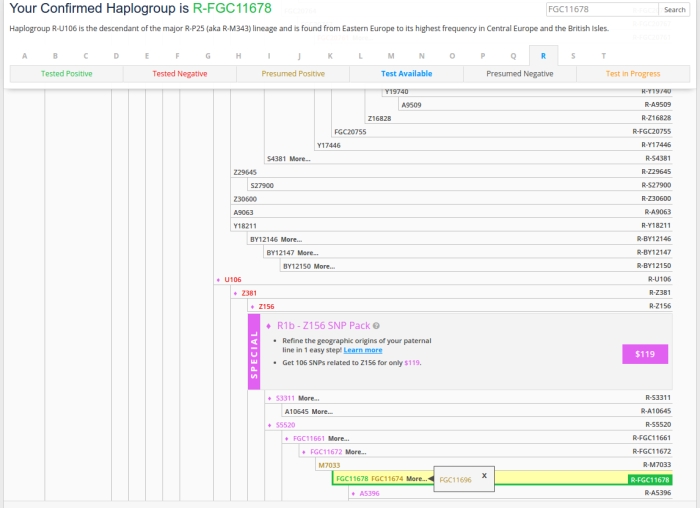Ok, my family are the Myers from Texas, and a specific branch of the Myers from Texas. My parents were born in Granbury, Texas, in Hood County Texas. On my father’s side, we have been told from time immemorial that we’re descended from Germans, if you go back far enough. But is that true?
Traditional genealogy was the hobby of my Dad’s brother Tom, recently deceased. He could take us back to Charles Myers, born 1789 in Somerset, PA, and died 1857 in Missouri. Beyond that? I recall a comment on the Internet that Charles was a veteran of the War of 1812 and that is dad was Jacob Myers, a Revolutionary War veteran, from Philadelphia. Poking around various trees on Ancestry, I find that Jacob Myers is called Jacob Myers II on some, with a father named Jacob Myers. His birth is given as 1720, sometimes in England, sometimes not. My Dad’s brother was not sure that Jacob and Jacob II were real (see comment below).
So, are there ways we can trace back to Germany? The above is where traditional genealogy has gotten us. My father, some six years ago, was given as a birthday present a Y-DNA test from Family Tree DNA. It was a STR (Y-67) test, which if I understand correctly, is a check of hypervariable regions of the Y chromosome and thus useful for finding relations anywhere from 5 to 30+ generations back. Using this, my Dad found a relative named Ross, whose parental line gets lost in North Carolina in the 18th century. Given how close they are on the 67 test, Ross and my Dad have a common ancestor perhaps 12 generations back, or less (88% by the 8th generation). But that isn’t the leap to get the family to Germany.
These days I’m more interested in defining the Myers haplogroup. I did the Nat Geo Geno 2.0+ test. but for Europeans it has holes. The biggest of these is the lack of the P312 SNP, which is a major European branch. So I’m waiting on more testing at the moment. We are P310 positive, according to Nat Geo.
Anyway, this is enough to introduce you to the problem. I’ll have more specifics for later.
- The Jacob Myers comment probably needs elaboration. The Jacob Myers that gets pointed to is a real person, but how that person, born in Maryland and supposedly in Philadelphia for some time, gets out to Somerset PA (closer to Pittsburgh, really) to father Charles is really the trick. Sometimes the ancient genealogies contain a lot of wishful thinking, like mothers that give birth at 3 years of age (yes, I’ve seen that too in various records).




